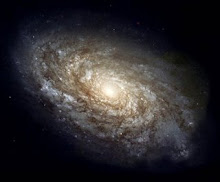Q: Why Did God Make Viruses?
A: There are some fundamental differences in how creationists and evolutionists view life. Biblical creationists believe that God created life according to their kinds with the ability to reproduce and fill the earth. This view includes the concepts that God had purpose in what He created and that it originally was very good.
In contrast, evolutionists view life as all descending from a single common ancestor by chance processes. Evolutionary arguments tend to imply that life isn’t really very complex or well designed. For example, 100 years ago a cell was promoted as being nothing more than a blob of protoplasm, implying that it wouldn’t be difficult for it to arise by chance. This proved to be wrong; cells are incredibly complex structures. At one time evolutionists argued that organs or structures with no known function actually had no function; at the time this included hundreds of organs and structures in the human body. Instead these were believed to be vestiges of evolution. This argument has become rather vestigial itself, as these organs have been found to have function.
Yet, this argument reappeared in genetics. Most of the DNA in our bodies does not code for proteins, so it was labeled “junk DNA” by evolutionists that assumed it has no function. As research continues it is becoming clear that this DNA has numerous essential functions. The evolutionary worldview has a dismal track record for anticipating the astounding complexity in life uncovered by scientific research.
If God created everything good and with a purpose, why are there disease-causing bacteria and viruses in the world? It is true that we first learned about bacteria and viruses because of the problems they cause. Bacteria have been studied in considerable detail and are now recognized to be mainly helpful and absolutely essential for life on earth; bacteria that cause disease (which occurred as a result of the Fall) are the exceptions, not the rule. But what about viruses: what purpose could they possibly have?
To learn the full, semi-technical answer, visit Dr. Jean K. Lightner’s Why Did God Make Viruses?
Don’t Miss Out!
Want to learn more about how the Bible is confirmed by the living things we see around us? Join us for a six-week study in “Creation Apologetics and Biology.” You will explore how the amazing complexity found in every cell and the structure of DNA confirm the existence of the Creator. You will also take an in-depth look at how mutations and natural selection actually work. We will also explore cultural misunderstandings of evolutionary icons. Interact with other students from around the world and with Dr. Georgia Purdom to strengthen your faith as you participate in this course.
The next session runs from January 25 through March 7. Registration closes on January 19—so don’t wait!
For more information about these learning opportunities, visit edu.answersingenesis.org.
News to Note Quick Look
Tiny diamonds, big explosion: Scientists are taking the gold standard for proof of extinction to the next level—with diamonds. Read more.
The true colors of evolution: A quarter-century ago, they might have been considered just as fantastic as pink elephants—but now pink iguanas are in the scientific spotlight. Read more.
Also: the case of the missing dust; forward or reverse, this isn’t evolution; once upon a time . . . ; the cost of skepticism?; and grief over a reef. Read more.
Prayer Requests
Events in 2009
Photo Database and Answers Magazine
New Products
Answers ... with Ken Ham radio program
The earth is young—but how do we know?
Defending the faith—now, who can do it?
Teen vandalism—what’s wrong with this generation?
The giant sea louse—an evolutionary problem!
Noah’s Ark—is it for adults also?
After Eden
This information was provided by Answers In Genesis, an excellent source of material relating to Creation and evolution. Please visit their website using the link in the upper left.
Subscribe to:
Post Comments (Atom)

No comments:
Post a Comment